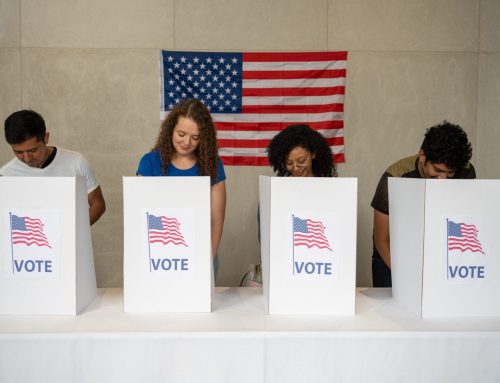THE ALLIANCE FOR SECURING DEMOCRACY EXPANDS HAMILTON 2.0 DASHBOARD TO INCLUDE IRAN
Interactive tool tracks official Iranian messaging and information manipulation on topics like COVID-19 and U.S. protests
Contact: Rachael Dean Wilson or Kayla Goodson, Alliance for Securing Democracy, press@securingdemocracy.org
Washington, D.C. – The Alliance for Securing Democracy at the German Marshall Fund of the United States today expanded the Hamilton 2.0 dashboard to include the tracking of Iranian government-backed messaging and narratives promoted on social media and state-sponsored websites. The interactive, publicly accessible dashboard captures content from more than 200 Iranian diplomatic and media accounts on Twitter and three state-sponsored news websites. Data from these accounts will be added to the existing Hamilton 2.0 dashboard, which publicly tracks Russian government and Chinese Communist Party official outputs as well as state-funded media.
Collecting data since January 2020, the Iran section of the dashboard has captured official government messaging on topics like the killing of George Floyd and protests in the United States, the coronavirus pandemic, and U.S. sanctions against Iran.
“Expanding Hamilton 2.0’s tracking of diplomatic accounts and state-backed media to include Iran allows for cross-cutting analysis and comparison of messaging trends and tactics across official channels from China, Iran, and Russia,” said ASD’s media and digital disinformation fellow Bret Schafer “Initial Hamilton 2.0 data shows circular amplification among the three networks of narratives critical of the United States on issues ranging from the coronavirus pandemic to Middle East policy. Most recently, all three countries have used the protests surrounding the killing of George Floyd and the unrest in the United States to undermine U.S. credibility abroad.”
“Although Iran’s online influence operations remain more limited than those undertaken by Russia and China in their breadth, scope, and sophistication, Tehran has been consistently stepping up its information manipulation game in recent years,” said ASD’s Middle East fellow Ariane Tabatabai. “Hamilton 2.0 data shows how Iran uses its state media and social media platforms, particularly Twitter, to advance its agenda. Many social media platforms, including Twitter, are banned in Iran—albeit without coherent enforcement—yet Iranian officials, diplomatic posts, and media are present and active on the platform. Unlike Russia and China, Iran’s goals appear more limited: The regime is predominantly focused on undercutting American policies designed to isolate and counter the Islamic Republic. Delegitimizing U.S. economic sanctions against Iran and calling out what they see as America’s hypocritical condemnations of the regime’s human rights abuses are among the main goals pursued by Iran.”
Key Findings:
- Iran, China, and Russia highlight American treatment of protestors and minorities. Hamilton 2.0 data shows a significant amount of circular amplification – from China’s diplomats retweeting Russian RT segments to Iranian state television echoing Chinese officials’ talking points. Overlapping narratives from Iran, China, and Russia related to the George Floyd protests charge the United States with hypocrisy over its support for protestors abroad versus its treatment of protestors at home. This message is particularly appealing to China and Iran’s governments due to American commentary on protests in Hong Kong and Iran, most recently in November 2019 and January 2020. To date, there is little evidence that any of the three countries have engaged in mis- or disinformation or attempted to promote violence in the United States using the George Floyd protests. Instead, the efforts seemed targeted at undermining U.S. credibility, both at home and abroad.
- Authoritarian regimes’ messaging increasingly targets foreign audiences. Iran’s diplomatic presence on Twitter surged between August and December 2018, when over 100 diplomatic accounts were created (more than half of Iran’s official total presence). Similar to China’s efforts to establish a diplomatic presence on Twitter after protests erupted in Hong Kong, Iranian diplomats’ prioritization of Twitter appears tied to efforts to shape global public opinion. Influencing European public opinion has been a particular focus after the 2018 American withdrawal from the Iran nuclear deal. Efforts to counter Washington’s message appeared most pronounced in September 2018 during the UN General Assembly annual meeting, when American and Iranian officials tried to build international support for their respective positions. Eleven Iranian embassies and diplomats joined Twitter between September 24 and 25, within 24 hours of President Trump’s speech before the UN General Assembly where he blasted Iran’s leaders for supporting “chaos, death, and destruction.” Those two days rank as the first and second most active days in terms of Iranian government account creation.
- Iran and China overlap on messaging around coronavirus. Iranian accounts’ tendency to favor China’s state-backed messaging is apparent in the narrative convergence around the coronavirus pandemic. Iran adopted numerous narratives pushed by Chinese diplomats and media. This includes sowing doubt regarding the origins of the coronavirus and amplifying conspiracy theories about the United States’ supposed involvement in creating the disease, trumpeting China’s role as a benefactor to countries struck by the virus through “mask diplomacy,” and echoing China’s effort to construe the United States as a “harmful” force in the world’s response to the pandemic. The top 30 non-Iranian accounts retweeted by Iranian government and media accounts include five Chinese officials or state media accounts (@AmbChangHua; @MFA_China; @ChinaMission2UN; @globaltimesnews; @ChinaDaily) and one Russian account (@Amb_Ulyanov). Surprisingly, given the narrative overlap between Iranian and Russian state television, RT and Sputnik’s accounts received little engagement from Iranian government and media accounts.
- Iran uses COVID-19 to push anti-sanctions agenda. A particularly salient narrative pushed by Iranian accounts and outlets is that U.S. sanctions are negatively affecting Iran’s ability to fight the pandemic. This line of messaging serves several objectives including distracting from the regime’s own botched response to COVID-19 and undermining American efforts to isolate Tehran. More than a dozen hashtags connecting sanctions to COVID-19 were used by Iranian accounts, with #endCOVIDsanctions used 91 times by Iranian accounts tracked by the dashboard. U.S. sanctions have consistently been criticized by Iranian accounts. The hashtag #economicterrorism has been used more than 500 times by official Iranian accounts.
The expanded dashboard can be accessed here: https://securingdemocracy.gmfus.org/hamilton-dashboard
Among other features, the tool will rank the most active accounts in the data set, most popular tweets and hashtags, most discussed topics and countries, most shared articles on Facebook, and more. Hamilton 2.0 was developed in partnership with Debunk.eu, VidRovr, and Atlas Public Policy.
LINKS & RESOURCES:
Read about the methodology here.
Interact with the Hamilton 2.0 dashboard here.
Read the latest Hamilton Weekly report on ASD’s blog here.
Read ASD’s latest work on coronavirus and information manipulation here.
Reporters interested in a Hamilton 2.0 briefing or interview should reach out to Rachael Dean Wilson at rwilson@securingdemocracy.org.
The views expressed in GMF publications and commentary are the views of the author alone.




